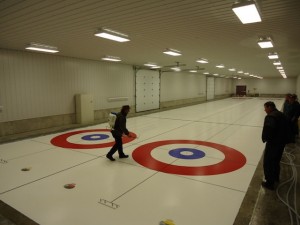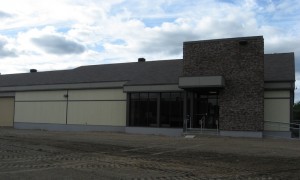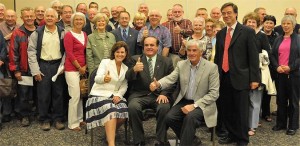Around the House: How curling came to Maniwaki, Part Two
In September 2011, icemakers went to work at the Club de Curling Valleé de la Gatineau/Gatineau Valley Curling Club in Maniwaki – for the very first time.
But it was a long journey, one that began in 1999 with the efforts of Maniwaki resident Réginald Bouchard. Assisted by his wife, Claudette, and daughter, Janique, Réginald organized a four-day open house on the ice at the local hockey arena, pulling in 70 potential curlers. Soon, he and a steadily increasing number of new curlers had started a Monday afternoon league, and a year later they added an evening league attracting even more members.
The curling bug had hit Maniwaki, and the push was on to build a home for the growing club. But even though money was raised and agreements with the town were finalized, the project stalled in 2004.
“Unfortunately,” remembers club member Terry Tims, “the next five years were long, difficult and frustrating. Anyone who has had to deal with three levels of governments and elections, both federal and provincial, becomes aware that things do not move very fast.”
The first problem was that the local town council was not completely on board with the project, which made it difficult to navigate other levels of government bureaucracy. “Any requests for grants had to come from them and not directly from the club, which is a non-profit entity,” explains Tims.
With a name in place and a goal clearly set, the Club de Curling Valleé de la Gatineau/Gatineau Valley Curling Club went to work.
“The club had agreed from the beginning to raise the town’s one third of the original cost estimate,” recounts Tims. “Several times club members filled town hall to demonstrate to council that we were serious and that a curling rink would be beneficial for the town. The provincial and federal governments were to provide the balance via various programs. However, to obtain the grants, the building now would have to be a ‘multiuse’ facility.”
That meant costs kept rising. The estimate reached a discouraging $1,666,000, but determined club members set out to raise their share, a whopping $555,333. Within 15 months, 80 per cent of that amount had been raised or committed.
Other roadblocks sprang up. “Several times the grants were promised, and then they would somehow no longer meet certain criteria or deadlines,” says Tims.
Even when it appeared that all the pieces were in place and the town called for bids from contractors, the project stalled yet again.
“Nothing happened. No news, no contractor, no building. Total frustration, total despair, and total low point.”
Then, in October, the board was unexpectedly invited to a press conference featuring provincial MP Stephanie Valleé, Mayor Robert Coulombe, and federal MP Laurence Cannon.
Imagine the curlers’ incredulous and ecstatic reaction when the government officials made their public announcement: the money was in place and the construction of the club building would start in November. Club de Curling Valleé de la Gatineau/Gatineau Valley Curling Club was finally a reality!
“[We] thank our lucky stars for our provincial MP Stephanie Valleé,” Tims says. “Through these long years she always supported the project and somehow was able not to let the provincial portion of the grant be swallowed up elsewhere.”
Today, the club is busy preparing for its first season in its new, permanent home. Ice making has begun, membership registrations are coming in, and the club’s board and committed members are working hard to learn everything they can about the business of running a successful curling facility. That means calling on experts like the Ottawa Curling Club’s Earl Morris, who visited in August to offer a session on the importance of retaining new members.
“The CCA has become more involved the past two years,” says Tims. “Marco Berthelot and Marco Ferro of Curling Quebec, and Danny Lamoureux of the CCA have helped us with information, advice and referrals.”
The Board of Directors, led by president Gary Moore, is working hard to establish subcommittees to cover the varied aspects of running a club for the first time. With 85 returning members and a growing number of paid-up new members – not to mention approximately 60 others waiting to try the sport – the upcoming season looks promising.
“We realize that we have many challenges,” admits Terry Tims, citing lack of experience, the transition to “real” curling ice, and the high number of new curlers. But these are nothing compared to the challenges this dedicated group of curlers have already faced – and overcome.
“In 1999, there were no curlers in our town. In 2011, we will have 140,” Tims muses. “Without Reginald’s love of the sport and his initiative, curling would not have seen the light of day.”
And he adds: “Curling must be a very special sport to engage so many to persevere for so long.”







